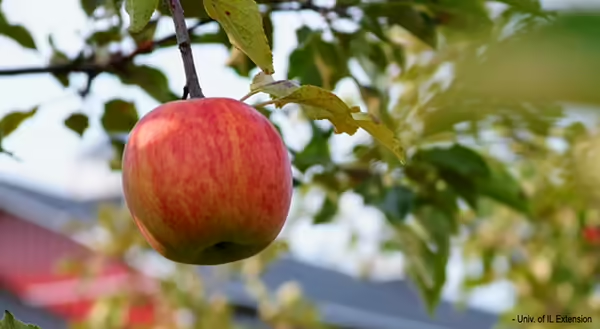
There is a lot of interest by home gardeners to raise and produce organic fruit.
The good news is it can be done!
Home growers need to be attentive to their fruit trees and know when to apply control measures.
Producing fruit that is relatively free of discoloration and damage from diseases and pests requires the use of various control measures- cultural, mechanical, and chemical. All can be done using organic practices.
Cultural
First, select the proper fruit tree variety for your conditions and your management style. Over the past 40 years, there has been an effort to produce fruit trees with resistance to common diseases, particularly in apples. Purdue University has a listing of apple varieties and their resistance to the common apple diseases of the Midwest. I have found this list very helpful in selecting apple trees to grow in my garden.
Our four most common apple diseases are apple scab, fire blight, juniper rusts, and powdery mildew.
Choosing disease-resistant apple varieties reduces the need for having to use fungicides and may eliminate the need for their use entirely.
Mechanical
Fruit trees require annual pruning to ensure good air circulation through the tree canopy. The ability of air to move through the tree helps to dry moisture off the fruit and reduces the likelihood of a disease infection. Our unit holds fruit tree pruning workshops annually, and other Extension offices do as well. If you are looking to learn pruning on your own, Kansas State University has a good apple pruning how-to video.
Chemical
Lastly, chemical controls may be needed to handle any disease or insect pests that we observe, or have observed, in the past damaging our apple fruit. All is not lost, Washington State University has developed a series of factsheets for pest control in the home orchard, which includes organic pesticide options. The use of chemical control measures should be our final choice after having selected disease-resistant apple varieties to plant and then pruned properly.